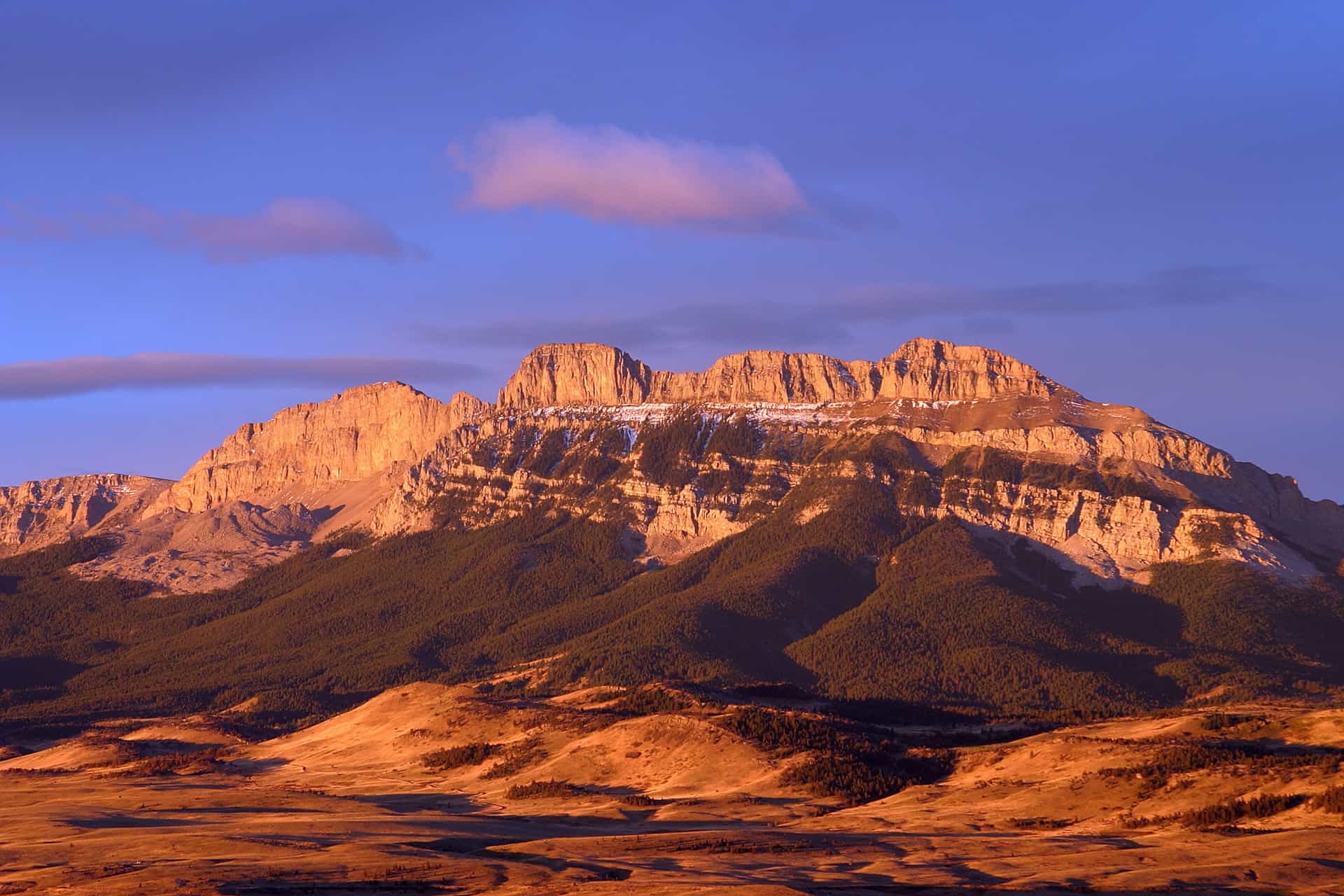
From Oregon here:
Oregon’s rural communities cannot afford another 20 years of gridlock in our federal forests. Without a new path forward, mills will continue to disappear, forest jobs will be outsourced and counties will be pushed off the budgetary cliff. During a time when it’s particularly hard to find common ground in public policy, we think we have achieved a balanced forest health and jobs plan — and in a uniquely Oregon way.
As a bipartisan coalition, we have worked through our differences to forge a plan that would create thousands of new jobs, ensure the health of federal forests for future generations and provide long-term funding certainty for Oregon’s rural schools, roads and law enforcement agencies.
Federal support payments to rural and forested communities, commonly known as “county payments,” helped support rural Oregon counties for more than a decade. They expired Oct. 1.
Absent a long-term solution, diminishing county payments will have serious consequences for Oregon families and businesses.
A recent Oregon State University study found that without county payments, Oregon’s rural counties will shed between 3,000 and 4,000 jobs. Oregon business sales will drop by an estimated $385 million to $400 million. Counties will lose $250 million to $300 million in revenues.
Counties already near the financial cliff and facing depressionlike unemployment soon may call for a public safety emergency and will be forced to eliminate most state-mandated services — including services that help the neediest citizens in our communities.
Failing counties will have consequences for the entire state. Those counties will continue to release offenders and close jail beds. Potholed roads and structurally deficient bridges will be neglected. And already-underfunded rural schools will be devastated.
Given the serious fiscal crisis our forested communities face, we believe a new approach is necessary to create jobs, help stabilize Oregon’s rural communities and better manage our forests.
We hope to release the full details of our plan early next year. But, given the importance and enormous amount of public interest in this issue, we wanted to update Oregonians on the broad outlines of our work:
Our plan would create an estimated 12,000 new jobs throughout Oregon. To preserve and expand Oregon’s manufacturing base, our plan would continue the ban on exporting unprocessed logs from federal lands and impose penalties on businesses that violate the law and send family-wage jobs overseas.
Our plan would allow sustainable timber harvest primarily on lands that have been logged previously. It sets aside sensitive areas and mature and old growth forests. The timber harvest lands would remain under the ownership of the federal government but would be managed in trust for the counties by a diverse, public board under strict guidelines to ensure sustained yield and to protect and improve clean water and terrestrial and aquatic values. The mature and old growth forests would be transferred from the federal Bureau of Land Management to the U.S. Forest Service.
Our plan would provide counties in Western Oregon with a predictable level of revenues in perpetuity to support essential county services such as law enforcement, health care, education and transportation. It would reduce counties’ dependence on uncertain federal support payments in favor of a long-term solution that allows them to return to the tradition of self-reliance that embodies our state’s heritage.
Our plan is expected to save taxpayers tens of millions of dollars by reducing the annual federal management costs associated with the management of Western Oregon timberlands and making Oregon counties self-sufficient and not dependent upon federal county payments.
Our plan proposes major new wilderness and wild and scenic designations to protect some of Oregon’s most incredible natural treasures, such as the iconic Rogue River.
Our plan is a moderate approach.
It will not appease those who insist on returning to the days of unsustainable logging and clear-cutting old growth on public lands. It will not win the support of those who are content with the status quo — administrative gridlock and endless legal appeals that have led to unhealthy forests, failing rural counties and a deteriorating timber industry.
And like all legislation in Congress, our plan still is subject to the legislative process. While we believe the plan we have crafted is a reasonable compromise that serves the best interests of Oregon, we must work with the House Committee on Natural Resources and our colleagues in the greater House of Representatives, the Senate and the Obama administration.
Fortunately, the most persuasive arguments are on our side. Our balanced, bipartisan plan would create thousands of jobs in our forests, mills and communities, stabilize rural communities, save taxpayers money, protect old growth and ensure the health of federal forests for future generations.
It’s a solution that Oregonians deserve. We look forward to working with those who want to make this long-term vision a reality.
U.S. Reps. Peter DeFazio, Greg Walden and Kurt Schrader represent Oregon’s 4th, 1st and 5th congressional districts.
From Montana:
Battle for Preservation In Montana Is Nothing New
By Gabriel Furshong / Writers on the Range on Wed, Dec 28, 2011
http://www.abqjournal.com/main/2011/12/28/north/battle-for-preservation-in-montana-is-nothing-new.html
More so than any other landscape in Big Sky Country, Montana’s Rocky Mountain Front derives its wonder from a violent juxtaposition of geological forms. The Front is the convergence of two mega-ecosystems that together cover roughly a quarter of our country – the Northern Plains and the Northern Rockies.
This is where each seemingly limitless region reaches its limit. Within this thin strip roams the second-largest elk herd in the Lower 48, as well as 13 species of raptor and a third of all plant species known in Montana. It’s the only place south of the Canadian border where grizzlies still den between the peaks and the prairie.
For 100 years, this landscape has been the subject of debate over the limits of acceptable change. Montanans along the Front have fought oil and gas exploration. It is a measure of their success that the battle cry of each generation has gradually shifted from our grandparents and great-grandparents, who wanted to “return it to the way it was,” to our parents and ourselves, who now want to “keep it the way it is.”
This last phrase – keep it the way it is – has for 10 years been the unofficial motto of the Coalition to Protect the Rocky Mountain Front, a loose affiliation of outfitters, ranchers, farmers, community organizers, business owners and outdoor enthusiasts. Thanks to this coalition, the debate over change on the Front is now closer to resolution than ever before.
Last October, Montana Sen. Max Baucus introduced the Rocky Mountain Front Heritage Act, which would designate 67,000 acres of wilderness and prohibit road building or any expansion of motorized use on an additional 210,000 acres. That’s big news. Yet, the relative calm with which the news was received has been surprising. When I asked a veteran writer and former journalist for the Missoulian newspaper what he thought about the media coverage of Baucus’ announcement, all he could say was, “I just don’t understand why it hasn’t gotten more attention.”
His words followed me to the Front where I retreated for a hunting trip just a week after the announcement. While waiting on white-tailed deer, I found myself reflecting on the twists and turns of our local debate over change. I wondered why this pending resolution has been received so quietly after so much time and such a lot of fuss.
The coalition’s many predecessors fought seemingly endless battles for the better part of a century, from the near-extinction of the buffalo and other species to agency road building and aggressive oil and gas exploration. Our first victory finally came in 2006, when Republican Sen. Conrad Burns and Democratic Sen. Max Baucus banned all leasing of federal minerals along the Front. Forest Service travel plan decisions that followed in 2007 and 2009 emphasized traditional use over motorized recreation, and suddenly, a once-complicated landscape was largely cleared of competing interests.
It was then that farmers and ranchers affiliated with the coalition raised an important question: Would we have the restraint to avoid becoming agents of change ourselves? Over the next four years, we interviewed grazing permittees, argued with county commissioners, developed alliances, held meetings of 100 people and meetings of 10 people, and sought out hundreds of kitchen-table conversations, one person at a time.
We drew boundaries. We nearly fell out with each other several times, but we hung onto the ideal of restraint. In the end, it was not just the landscape that we chose to the keep the way it was. We chose to maintain all existing uses as well, including motorized and bicycle use alongside traditional horse and hiker travel.
So after going through so much, it’s understandable that this final stage in the fight is underwhelming. Indeed, the only evident opposition to the Heritage Act so far came in the form of an indignant email from a small western Montana environmental group decrying the legislation as containing far too few wilderness acres. I mentioned this to a Vietnam veteran and local lawyer from Choteau, Mont., when I ran into him on my hunting trip. As he trailed his horse around me, he just shook his head and said, “Well, we’ve had that debate a million times before.”
Yes, we have, and with any luck it won’t change a thing.
At this time of the year, I am working on my end-of-year donations. I received a “Top 10 Reasons to Give” list from an international environmental law NGO that I support. One of the bullets on the list was “because forest peoples deserve a say in how their land is used…. we will continue to work to safeguard the rights of indigenous people and other local communities in the implementation of projects to reduce greenhouse gas emissions from deforestation (REDD).” It’s a good question for consideration, I think, in the New Year. We should be considering property rights, local history, and political legitimacy in terms of the legitimate role of local people in our own country.
What kind of “rights” should local communities have in terms of decision making on federal lands? It reminds me of a dinner I had once with a Senior Executive of another federal agency. His point of view was that the people of Delta don’t deserve any more of a voice in the management of public lands around Delta than people in the Bronx. On the other hand, we have the county “coordination” movement and increasing local/federal tensions. What can we learn from the two examples above, who seem to have managed to find a middle ground?

